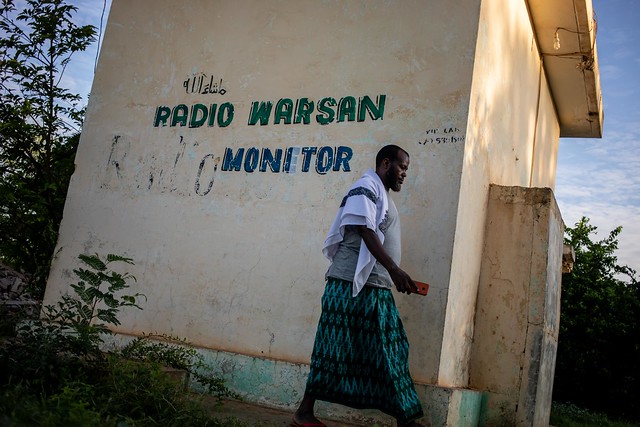Distance learning via radio for rural communities in Somalia

Somalia has experienced years of conflict and fragility resulting in chronic poverty and vulnerability, displacement, poor economic capacity and food and nutrition insecurity. In 2020, up to 1.3 million people across Somalia were expected to face food consumption gaps or depletion of assets as the result of climatic shocks that have been recurrent since 2016, including six seasons of drought conditions and two seasons of severe flooding. In addition, almost 850,000 children under the age of five were acutely malnourished, including over 143 000 likely to be severely malnourished.
To respond to this looming crisis, the Food and Agriculture Organization (FAO) of the United Nations, promoted activities aimed at:
- enhancing food security and resilience, through integrated cash and livelihood assistance for crop, livestock and fisheries; and
- tackling underlying causes of malnutrition, through nutrition awareness raising, food hygiene, conservation and storage.
This promising practice documents a distance learning initiative through radio launched in 2020 by FAO as a response to threats posed by the COVID-19 pandemic, supporting cash+ activities and replacing face-to-face beneficiary trainings. Through this initiative, FAO sought to continue enhancing rural communities’ capacities to mitigate shocks, especially those compounded by the COVID-19 crisis, and disseminate context-specific behaviour change messages on nutrition and healthy diets. In 2021, the scope of the training was expanded to include long-term agriculture development programmes and social protection activities through village savings and loans associations.
SOME KEY TAKEAWAYS
- On communication: Evidence shows that communication is a key element of agricultural and rural development. Making knowledge and information available to the most vulnerable segment of the population, while involving them in key decision and collective action, plays a fundamental role in emergencies and protracted crises. A multimedia approach, including diversified communication formats according to the audiences’ needs and characteristics, can orient the development of tailored educational content. The promising use of social media in Puntland and Galmudug shows how additional online communication tools can be explored to share educational messages while encouraging the participation of women and youth.
- On gender: Men and women in rural food-producing communities in Somalia have different access to communication channels and may have diverse needs, interests, knowledge and expectations according to their cultural roles and responsibilities. A gender-inclusive communication terminology is important in all media outputs. The long-distance learning initiative has adopted a gender-based communication perspective that considers context-based constraints excluding women from communication processes. Gender-sensitive modules responding to women’s needs based on their household and agricultural roles, allow women to gain knowledge and information for improved health and nutrition for themselves and their families.
- On adaptive management: The COVID-19 pandemic showed the importance of accessing information and communication services to ensure preparedness for early action, mitigate the effect of crises and foster the recovery of affected rural populations. This initiative, developed as an adaptive measure to the COVID-19 pandemic, has quickly become an integral part of FAO’s e-platform for mobile money and livelihood assistance in Somalia thanks to the communication for development principle of the multimedia mix. Planning for the combined use of radio with mobile phones may be more cost-effective and have the greatest chance for positive impact.
- On capacity development: The initiative was appreciated by most audiences as it improved farmer’s knowledge of good agricultural practices and households’ health. Indeed, 96 percent of good agricultural practices training recipients applied knowledge received to their farming activities; all trainees found the knowledge gained to be useful; and 92 percent were able to share skills and knowledge gained with other people, resulting in horizontal knowledge transfer. For the nutrition training, the most cited outcomes were improved health and steady recovery of sick household members. Although the selection of radio as a communication channel was successful, to increase the impact, sustainability, and coverage of the initiative, a communication for development approach and inclusive rural communication should be adopted, and the capacity of national institutions should be strengthened.
- On localization: The collaboration with local radio stations and the inclusion of experts from local NGOs in the broadcast creates local ownership and builds trust in the episode content. Moreover, this collaboration enabled the successful generation of a communication for development approach that considers audience needs and socio-cultural characteristics and aligned the content with seasonal priorities of the different productive sectors (agriculture, fisheries and livestock). Lastly, local NGOs played a crucial role raising awareness among cash+ beneficiaries of the radio schedule and FM radio frequencies.


